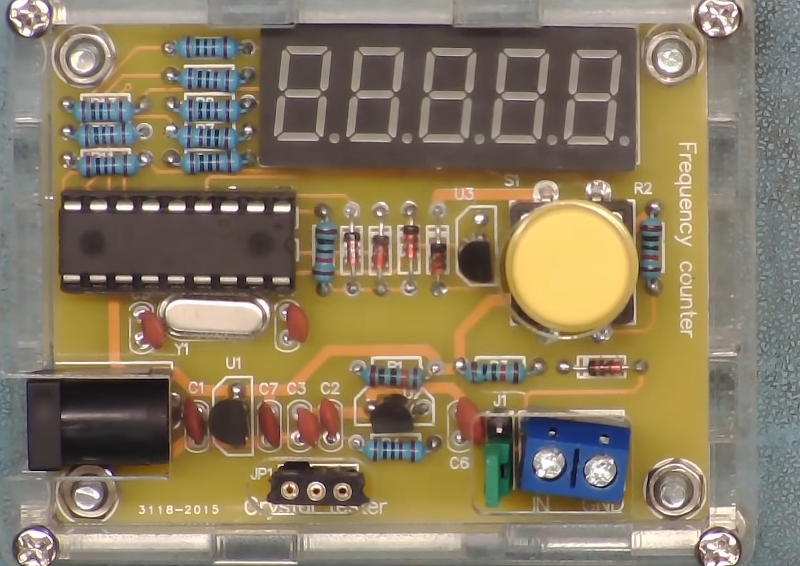
Like many people who repair stuff, [Learn Electronics Repair] has an oscilloscope. But after using it to test a motherboard crystal oscillator, he started thinking about how people who don’t own a scope might do the same kind of test. He picked up a frequency counter/crystal tester kit that was quite inexpensive — under $10. He built it, and then tried it to see how well it would work in-circuit.
The kit has an unusual use of 7-segment displays to sort-of display words for menus. There is a socket to plug in a crystal for testing, but that won’t work for the intended application. He made a small extender to simplify connecting crystals even if they are surface mount. He eventually added a BNC socket to the counter input, but at first just wired some test leads directly in.
So how was probing with the frequency counter compared to using the scope? You would think it should work with no real problem. On the one hand, it should be easier to read the frequency from the counter, especially if you don’t have a scope that displays waveform data. On the other hand, the counter doesn’t give you any data about the quality of the clock source. Is it noisy? Clean? 50% duty cycle or 10%? Can’t tell without the scope. Turns out, though, that the cheap counter wouldn’t read high-frequency clock signals from a motherboard for some reason. It was, however, able to measure fan PWM signals.
We assume the cheap frequency counter doesn’t have a proper input stage and was loading down the crystal oscillators. The wire probe probably didn’t help any either. A proper frequency counter would probably work, but a cheap meter that had a frequency counter function didn’t do any better. He also connected a scope probe to both devices with no better results. We wondered if the 10X setting on the probe might have loaded the circuit less. We also think the preamp hack we’ve covered before might have helped.
In the end, the cheap little device didn’t seem to meet his original purpose. But for a simple crystal tester and frequency counter, it was inexpensive enough. While a proper frequency counter would probably work, scopes are getting pretty low-cost, and they can do a lot more.
0 Commentaires